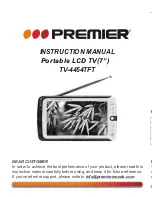
100592 - 6250W DUAL FUEL GENERATOR
V
OPERATION
23
3. Plug in and turn on the first item. It is best to attach the
item with the largest load first.
4. Allow the engine to stabilize.
5. Plug in and turn on the next item.
6. Allow the engine to stabilize.
7. Repeat steps 5-6 for each additional item.
NOTICE
Never exceed the specified capacity when adding loads to
the generator.
GFCI
Your generator is equipped with ground fault circuit interrupter
(GFCI) receptacles. In the event of a ground fault, a GFCI trips
automatically to stop the flow of electricity and prevent serious
injury. The green indicator light (A) on the receptacle will also
turn off. Press the “RESET” (B) button located on the front of
the receptacle to restore flow of electricity. The indicator light
will also turn back on. GFCI does not protect against circuit
overloads.
To ensure proper operation of the GFCI duplex, perform this test
monthly:
1. With the generator running, plug a lamp into the GFCI
receptacle. Turn the lamp on.
2. Press the “TEST” (C) button located on the front of the
receptacle to trip the device. This should immediately
stop the flow of electricity and shut off the lamp. If the
electricity is not stopped, do not use this receptacle until it
has been serviced or replaced.
3. Press the “RESET” button located on the front of the
receptacle to restore the flow of electricity. If the indicator
light does not come back on or if the GFCI cannot be reset
then it must be replaced.
b
C
A
NOTICE
In any electrical application, some current will flow through
the protective ground conductor to the ground, this is called
leakage current. It takes 4 mA (0.004 A) and higher of
leakage current from the hot wire to the ground to cause a
GFCI to trip. On circuits protected by GFCI’s, leakage current
can cause unnecessary and intermittent tripping.
Some stationary motors, such as a bathroom vent fan,
fluorescent lighting fixtures or some refrigerators, may
produce enough leakage to cause nuisance tripping. To avoid
nuisance tripping, a GFCI should not supply:
–
Fluorescent or other types of electric-discharge lighting
fixtures.
–
Permanently installed electric motors, like air
conditioners, furnaces or refrigerators.
Stopping the Engine
1. Turn off and unplug all electrical loads. Never start or stop
the generator with electrical devices plugged in or turned
on.
2. Let generator run at no-load for several minutes to stabilize
engine and alternator temperature.
3. Turn the fuel select dial to the “ENGINE OFF” position.
Gasoline
Propane
4. If operating on LPG, close valve on LPG cylinder.













































